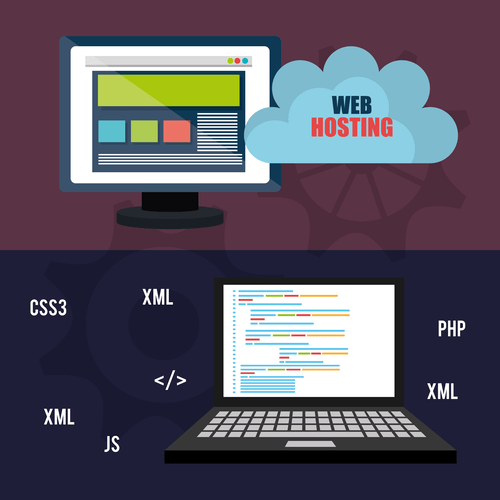Kubernetes helps a number of safety protocols such as RBAC, SSL/TLS, secrets and techniques management, insurance policies, and so on. Docker Swarm helps monitoring only by way of third-party purposes. Compared to Docker Swarm, Kubernetes has a extra complex installation and requires manual effort.
Their lightweight and secure nature and ability to be deployed swiftly in any surroundings contribute to their adoption. When it involves managing containers throughout varied machines, Docker Swarm is commonly the primary choose. Container orchestration is a pivotal idea in software growth and deployment.

desired service state by creating or updating a service, the orchestrator realizes the desired state by scheduling tasks. For instance, you outline a service that instructs the orchestrator to maintain three cases of an HTTP listener working always.
Be Taught Extra About Docker Swarm
Containers are designed to provide a constant surroundings across numerous platforms and improvement levels, from the developer’s laptop computer to the production setting. When submitting a task to Docker Swarm, it runs on a node; nonetheless, it cannot run on a unique node with the same ID. In order to create a task, you simply must create a service that describes the desired deployment after which the task will carry out the work. A task has a lifecycle status assigned to it with various states (for instance, NEW for newly created, PENDING for ready for task, or COMPLETE when it has efficiently completed). For newbies, Docker Swarm is an easy-to-use and easy solution to manage your containers at scale. If your organization is transferring to the container world and does not have complicated workloads to manage, then Docker Swarm is the proper alternative.

Tip If your only intention is to stop a service from being deployed, scale the service to zero as a substitute of making an attempt to configure it in such a method that it remains in pending. A task is analogous to a “slot” the place the scheduler
Just as Docker the corporate created Docker the project which oversaw Docker the technology, we ought to always clarify what we mean by Docker Swarm. To understand which might be right for what is docker swarm you, it’s essential to know the ideas that underpin Docker Swarm. You can run swarm join-token –rotate at any time to invalidate the older token and generate a new one, for safety functions.
As an orchestration engine, Docker Swarm decides the place to put workloads, and then manages requests for these workloads. A single machine can serve as each a manager and worker node, in which case workloads can run on any server within the swarm. With its studying process and easier set up, Docker Swarm proves to be a alternative for individuals already familiar with Docker instructions or those working on smaller to medium-sized projects.
Tooling and companies that ease running software program in containers, subsequently, occupy the minds of builders. They additionally create challenges in understanding obtainable choices, though. Running a number of supervisor nodes allows you to benefit from swarm mode’s fault-tolerance features. However, adding more managers does not imply increased scalability or higher performance. Load balancing is distributing the circulate of requests to companies in an even method. When you’ve a spike of requests (think Super Bowl time) and many people are visiting an net site, you need to unfold the variety of visits into a number of situations operating the website.
Docker Swarm, a tool designed explicitly for Docker, is renowned for its user-friendly interface and ease. It comes with built-in features for load balancing and allows quick and seamless deployment of containers. Consider a scenario the place a manager node sends out instructions to different worker nodes. To experiment with making a Swarm using Docker, you want to have no less than one supervisor node and a couple of worker nodes.
Making A Swarm
Currently, two of the preferred orchestration tools are Kubernetes and Docker Swarm. To create a swarm – run the docker swarm init command, which creates a single-node swarm on the present Docker engine. The current node becomes the supervisor node for the newly created swarm. The output for the docker swarm init command tells you which https://www.globalcloudteam.com/ command you need to run on other Docker containers to permit them to hitch your swarm as worker nodes.
In the next sections, we will explore how fashionable firms leverage container orchestration to streamline their IT infrastructure and the way Docker Swarm supports their endeavors. In this write-up, we learned what’s Docker Swarm, together with that understood the Swarm mode key concepts and the way Docker Swarm works. We also explored Kubernetes vs. Docker Swarm, and why we use Docker Swarm. In the top, we also noticed a case research on ‘How to set up Swarm within the Docker ecosystem’.
Employee Node
Global services, however, are like Kubernetes DaemonSets, in that you’ve one instance running on each node. Using Docker Swarms monitoring and alerting capabilities, you can effortlessly monitor the well-being and performance of your providers at any moment. This ensures that your applications are operating easily and securely inside your cluster.
- Worker nodes receive and execute duties dispatched from supervisor nodes.
- Horizontal autoscaling provides or removes replicas of the same pod, while vertical autoscaling adjustments the useful resource allocation of a single pod.
- Manager tokens should be strongly protected, because any access to the manager token grants management over a complete swarm.
- DevOps, containers, and container administration are at the center of most conversations about what’s related to know-how.
- Orchestration of workloads in containers is an umbrella for managing all of those issues and treatments in an automated method.
- outline its optimum state – number of replicas, network and storage sources
Both Kubernetes and Docker Swarm allow groups to specify the specified state of a system running multiple containerized workloads. Given this desired state, they flip it into reality by managing container lifecycles and monitoring their readiness and health of containers and providers. Operations specialists have historically handled creating environments to handle these considerations and run utility workloads.
Docker Swarm At Scale
So, as an alternative of placing in the “JRE” on our pc, we are ready to obtain portable JRE as a picture and embody it within the container with our code. Stackify’s APM tools are used by hundreds of .NET, Java, PHP, Node.js, Python, & Ruby builders everywhere in the world. It has many similarities to the Docker interface, but it’s a separate executable with extra instructions to know.
When you deploy the service to the swarm, the swarm supervisor accepts your service definition as the specified state for the service. Then it schedules the service on nodes in the swarm as a number of replica tasks. This article compares two well-liked container orchestration tools, Kubernetes and Docker Swarm.
A node is merely a bodily or virtual machine that runs one instance of Docker Engine in Swarm mode. Based on its configuration, this instance can run as a worker node or as a manager. A worker node is answerable for accepting workloads (deployments and services). On the other hand, supervisor nodes are the management aircraft of the Swarm and are answerable for service orchestration, consensus participation, and workload scheduling.
